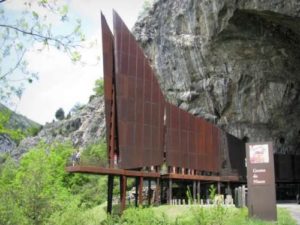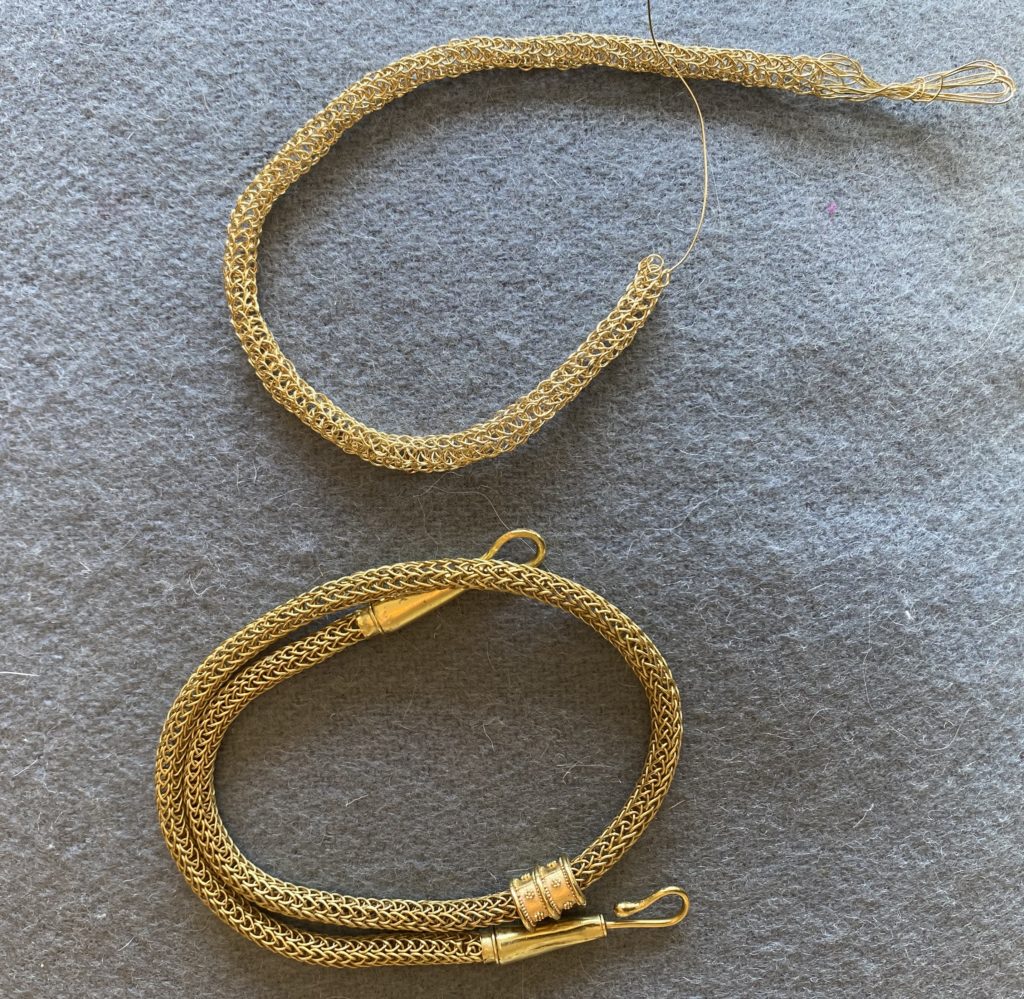 Nestled in the foothills of the French Pyrenees, La Grotte de Niaux is a series of subterranean caves, less well-known than those of Lascaux in the Dordogne, but, at approximately 13,000 years old, equally as breathtaking in their beautiful mystery. Kenny and I found ourselves heading into their profound darkness on the last guided tour of September 12th 2001, the tomorrow that we were not sure would really come, on the day immediately following the New York attacks. We had just arrived in the Languedoc for a cousin’s wedding and had decided to drive aimlessly in search of some kind of solace or explanation; anything rather than sitting around staring at each other’s despair.
Nestled in the foothills of the French Pyrenees, La Grotte de Niaux is a series of subterranean caves, less well-known than those of Lascaux in the Dordogne, but, at approximately 13,000 years old, equally as breathtaking in their beautiful mystery. Kenny and I found ourselves heading into their profound darkness on the last guided tour of September 12th 2001, the tomorrow that we were not sure would really come, on the day immediately following the New York attacks. We had just arrived in the Languedoc for a cousin’s wedding and had decided to drive aimlessly in search of some kind of solace or explanation; anything rather than sitting around staring at each other’s despair.
 We stumbled almost by accident upon the huge corten steel sculpture that marks the site of the cave opening. Mimicking the shape of the animals painted on the cave walls, it is a small speck from the road across the valley floor, but driving ever closer we were dwarfed by its magnitude, a dangerous beast much larger and more powerful than either of us. We parked and wandered into the visitor center, and hooked on to the small group of visitors that was just leaving. Putting on our headlamps, holding hands, and watching our slippery steps, we descended into the caves, very much adrift in the moment, not fully confessing that we didn’t know enough French to make sense of the guide until we were well below ground.
We stumbled almost by accident upon the huge corten steel sculpture that marks the site of the cave opening. Mimicking the shape of the animals painted on the cave walls, it is a small speck from the road across the valley floor, but driving ever closer we were dwarfed by its magnitude, a dangerous beast much larger and more powerful than either of us. We parked and wandered into the visitor center, and hooked on to the small group of visitors that was just leaving. Putting on our headlamps, holding hands, and watching our slippery steps, we descended into the caves, very much adrift in the moment, not fully confessing that we didn’t know enough French to make sense of the guide until we were well below ground.
Entering into the womb of the earth it was difficult not to release the tears that had built up, in a place where the silence was profound, where the raw space had not been altered to fit the safety of visitors, and where the violence of the previous day was well behind us in a foreign world. The chamber’s immersive sound bath of sudden and profound stillness was a shock. The air was wet, the surroundings original and unlit, the sense of isolation and age was chilling.
Illuminated by the guide’s torch, the cave walls were painted with depictions of animals, hunters, undeciphered designs, and although it is not clear whether these pictures were instructional, celebratory, or solely decorative, (this much I pieced together later from the guidebook) this gloomy and blank existence must have been made more tolerable by these additions, whatever their purpose.
It was reassuring to know on that afternoon that the arc of human history is long, and that despite the calamity in America, life would eventually resume and carry on. The enigmatic cave paintings were a reminder of the continuity and span of what had gone before, and what was yet to come.
Now in 2020, we are in lockdown to prevent the spread of Covid-19, the fast spreading virus that is taking over the world; we are not able to leave the house because of the threat of receiving or passing on the infection. Like the shadow days and months after 9/11, this has been a time to find reassurance in another Niaux, to look for a reminder of the permanence/impermanence of everything I know, in order to take comfort in the broad sweep that will continue long after this horror has passed.
 Looking for something to use up the time while he and his family are sequestered at home after the closure of his college, one of my former piano students asked me to guide him in music composition, in the form of online instruction that he can study from home. Counterpoint (an understanding of the horizontal forces at work in a musical score) is one of the building blocks of Western music, and has been a love of mine (because I was pretty good at it) for many years. In taking him through some counterpoint exercises (to be explained more fully later) I think I have found my new Niaux. I now spend my own day revisiting the austere beauty of voice against voice composition (punctus contra punctum, and hence Counterpoint) from an era before tonal harmony, before chords and their functions had ever entered the musician’s vocabulary, from a musical cave before life out on the plain was even considered.
Looking for something to use up the time while he and his family are sequestered at home after the closure of his college, one of my former piano students asked me to guide him in music composition, in the form of online instruction that he can study from home. Counterpoint (an understanding of the horizontal forces at work in a musical score) is one of the building blocks of Western music, and has been a love of mine (because I was pretty good at it) for many years. In taking him through some counterpoint exercises (to be explained more fully later) I think I have found my new Niaux. I now spend my own day revisiting the austere beauty of voice against voice composition (punctus contra punctum, and hence Counterpoint) from an era before tonal harmony, before chords and their functions had ever entered the musician’s vocabulary, from a musical cave before life out on the plain was even considered.
Harmony and Counterpoint are the vertical and the horizontal of music. Harmony is a story which dictates characters’ actions. Counterpoint is a series of decisions that make into a story; it is not a planned narrative. Harmony is the planned dinner party. Counterpoint is let’s see what’s in the fridge wow let’s invite people over. Of course this is as misleading as most generalizations, but the distinction helps me focus on and enjoy the unplanned, the spontaneous, the unexpected, and concentrate on the shape of things rather than the direction of things.
This period of sequestration is unprecedented in my own life time, and there is no reliable information as to how long it will remain in force. Since there is no knowing the direction of things, settling in to admire the shape of things is a necessary practice.

